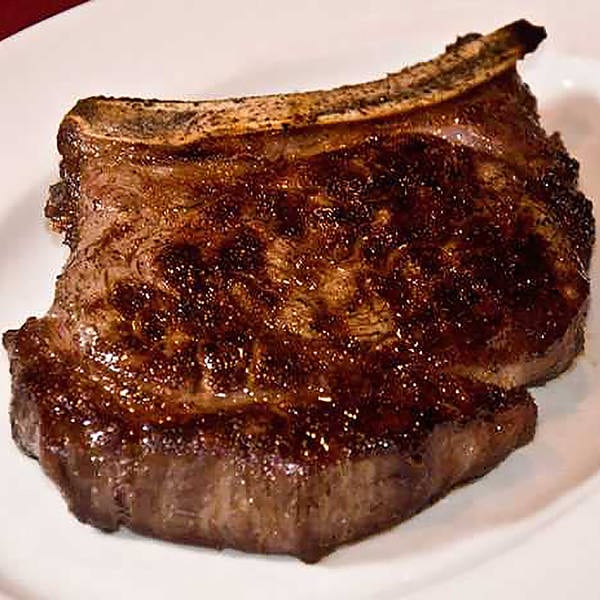With all the hoopla over juice cleanses and New Year’s resolutions, you’d never know that January is National Meat Month. Well, it’s true. And Americans are on track to have their biggest meat year ever. Surprise! According to the USDA, the average consumer will eat 222.2 pounds of red meat and poultry this year, edging out our last record high of 221.9 pounds per person set almost 15 years ago in 2004. Yup, we’re eating more meat. Chalk it up to protein. Most Americans are looking to get more protein and fewer carbs in their diets, and meat easily fills the bill. To celebrate National Meat Month, here are our top 5 meat tips to help you enjoy all that protein, courtesy of our own barbecue whisperer, Meathead.
Our Top 5 Meat Tips
- Use a thermometer. Medium-rare is 130ºF in beef, pork, lamb, venison, duck breasts, and even fish. Don’t bother looking at the color. It’s all about the internal temperature. Use a thermometer and you’ll never overcook food again. A reliable thermometer is more important to good cooking than a set of expensive knives. Check out our reviews of various reliable thermometers by electrical engineer BillMcGrath here.
- Master the 2-zone setup. High heat ruins more food than anything else. We grill too hot! To stop burning and dehydrating your food, set up your cooker with 2 heat zones, high and low. High is pretty much Warp 10, “Give it all she’s got Scotty!” It is direct radiant heat right above flame. Hit Warp 10 to sear and brown the surface of meat but not to cook the interior of the meat. Low is 225ºF- That’s the magic number. The low zone does not have flame below it and it gets warm by indirect convection airflow. When you cook outside, these are the two numbers you need to remember. However, there’s one exception: For skin-on poultry, I like the low zone at 325ºF to help crisp up the skin. To see all the details on setting up your cooker for 2-zone cooking, click here.
- Trim surface fat. Want to avoid flare-ups? Trim the fat from the surface of your meat. Fat drips into the fire and flares up so get rid of it. When it melts, surface fat does not penetrate the meat and moisturize it and make it taste better: that’s a myth. If you don’t trim surface fat, your guests will. And there goes your flavorful spice rub and browned crust. Trim the surface fat, and if you want to know more about why, go here.
- Don’t be afraid of salt. Salt is the magic rock. Herbs and spices sit on the surface of food, but salt dissolves and penetrates. It amplifies the taste of whatever you put it on, from meat to vegetables. And it helps meats hold onto moisture. Worried about your salt intake? Keep in mind that most of the sodium in our diets comes from processed and packaged foods and restaurant meals, not home cooking. Salt your meat in advance, so it can migrate to the center and deepen the flavor and hang onto moisture. But don’t be afraid to salt your food (Read more about different salts, brines, and rubs here.)
- It’s OK to go boneless. It’s a myth that grilled meat tastes better if it’s bone-in. That bone-in ribeye looks great on the plate but won’t taste any better than a boneless ribeye. Bone walls are made of calcium, which does not dissolve during cooking. The bone marrow also does nothing to flavor the meat during grilling and many bones are full of air pockets. They slow heat from getting to the meat. That’s why bone-in meat tends to cook unevenly with dry, overcooked edges and red rare meat near the bones. For even doneness, try boneless cuts. Read more about bones and the myths that surround them here.



High quality websites are expensive to run. If you help us, we’ll pay you back bigtime with an ad-free experience and a lot of freebies!
Millions come to AmazingRibs.com every month for high quality tested recipes, tips on technique, science, mythbusting, product reviews, and inspiration. But it is expensive to run a website with more than 2,000 pages and we don’t have a big corporate partner to subsidize us.
Our most important source of sustenance is people who join our Pitmaster Club. But please don’t think of it as a donation. Members get MANY great benefits. We block all third-party ads, we give members free ebooks, magazines, interviews, webinars, more recipes, a monthly sweepstakes with prizes worth up to $2,000, discounts on products, and best of all a community of like-minded cooks free of flame wars. Click below to see all the benefits, take a free 30 day trial, and help keep this site alive.
Post comments and questions below
1) Please try the search box at the top of every page before you ask for help.
2) Try to post your question to the appropriate page.
3) Tell us everything we need to know to help such as the type of cooker and thermometer. Dial thermometers are often off by as much as 50°F so if you are not using a good digital thermometer we probably can’t help you with time and temp questions. Please read this article about thermometers.
4) If you are a member of the Pitmaster Club, your comments login is probably different.
5) Posts with links in them may not appear immediately.
Moderators